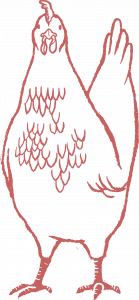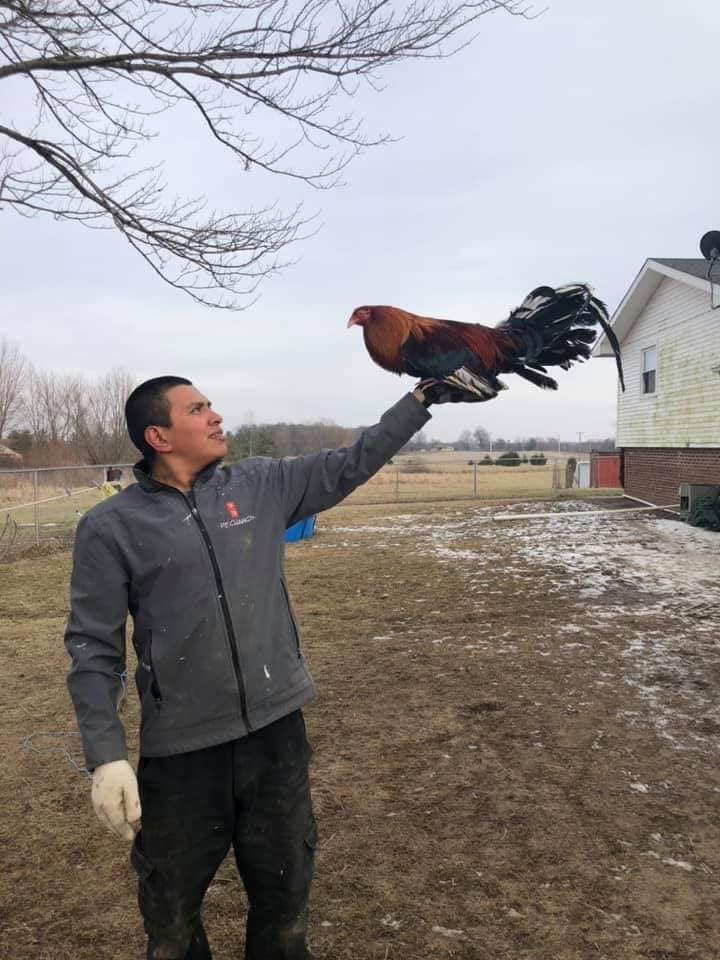

We Have A Podcast Episode On This Subject!
Want to learn about this topic in a different format? Check out our episode of The Open Sanctuary Podcast all about collaborating with shelters here!
The term “animal shelterAn organization, either government-funded and maintained or not-for-profit and funded by charitable contributions, with a physical infrastructure in which homeless animals are cared for and offered for adoption.” is laden with meaning for many. For some people, the associations they have may be negative. For example, when some people hear the term “shelter,” they might envision rows upon rows of kennels occupied by very sad animals waiting for homes, or for their lost caregivers to come find them. Some may imagine that animals in shelter environments will receive more limited care than they deserve. Some people may think about the possible deaths of those animals who are not lucky enough to be reunited with their owners, or find a forever home.
While these visions can at times be a sad reality when it comes to animal sheltersOrganizations, either government-funded and maintained or not-for-profit and funded by charitable contributions, with a physical infrastructure in which homeless animals are cared for and offered for adoption., like many aspects of the world of animal care and advocacy, it is not always that simple. Just like animal sanctuaries and rescues, animal shelters come in many different shapes and forms. Care standards, placement decisions, and policies differ vastly not just from urban to rural shelters, or from state to state, but even from shelter to shelter within a city, so generalizations about “all shelters” are typically less than accurate.
Shelters can potentially be wonderful allies in animal advocacy work, so just as we recommend that sanctuaries develop relationships with one another based on mutual support and understanding, we encourage sanctuaries and animal shelters to develop similarly mutually helpful relationships. To start this process, it may help to get a better and more nuanced understanding of animal shelters, and to consider ways in which animal advocates can assist shelters in order to provide support to the most animals in need. One way to do this is by setting aside preconceived notions and considering a more general and objective definition of what a shelter is. Consider this definition for example:
The Simplest Definition of an Animal Shelter:
“A publicly supported animal care space with a physical infrastructure in which homeless animals are given care and offered for adoption.”
To add some nuance, an animal shelter can be either a municipal shelter, which generally speaking, is government funded and maintained, or a nonprofitA non-governmental organization whose primary purpose is something other than selling goods or services. organization that is funded by charitable contributions. How shelters are structured and can (or cannot) receive donations can vary depending on local laws. Both types of shelters are ultimately answerable to the public in different ways. In the case of a municipal shelter, they are generally funded directly by tax dollars. In the case of a nonprofit organization, because they are tax-exempt, they hold a public trust. Both kinds of shelters are also answerable to the government in different ways. Municipal shelters are directly answerable to the entity of government through which they are created, which can be a city, county, or state or a combination of the three. Nonprofit organizations are ultimately answerable to their state administrative body that oversees nonprofitsNon-governmental organizations whose primary purpose is something other than selling goods or services., as well as to the IRS. Both are also likely to be administered by the department of agriculture in the state in which they are located.
Municipal And Nonprofit Shelters
When it comes to nonprofit shelters that are funded by charitable donations, these kinds of organizations often have (or should have!) limits on their capacity with respect to intake. They may also specialize in one or a limited amount of particular species. In some cases, this may enable them to provide a higher standard of care than what might be available at a municipal shelter, but they will also often have significantly more limitations when it comes to intake, and much less space to work with. Such shelters often also enjoy a much more positive public perception than that of a municipal shelter.
However, it’s important to remember that this perception does not necessarily mean that nonprofit shelters are more effective than municipal shelters when it comes to saving lives. Consider that, in the case of a municipal shelter, many of these organizations operate under mandates that require them to take every animal who comes through their doors, whether surrendered, found as stray, seized as part of law enforcement activities, or even wildlife in need. Imagine how overwhelming that job must be!
Showing Empathy And Compassion For All Animal Caregivers
Remember that, for those who spend much of their time as volunteers or as their full time job, giving direct care to animals in need can impose a significant physical and emotional toll. Both sanctuary and shelter caregivers can be susceptible to this and suffer from compassion fatigue and burnout. Gestures of kindness, understanding, empathy, and support towards caregivers (regardless of their context) who strive so hard to do their best for the animals in their care, often in the face of difficult circumstances, are meaningful to anyone who lives this experience.
The Many Responsibilities Of Animal Shelters
Consider also that on top of the incredible amount of work associated with the intake, assessment and triage of animals that a municipal shelter must do if they operate under a mandate to accept every animal brought to them, they may also often find themselves:
- Maintaining a field staff who can respond to calls from the public regarding animals in need and also conduct humane care investigation activities;
- Administering emergency and other medical care to animals who may need it;
- Making efforts to locate stray animals’ caregivers and doing their best to maintain publicly accessible records of intakes in accordance with local law so that caregivers have ample opportunities to find lost animals;
- Caregiving for the animals who are on site;
- Screening homes and adopting out animals who are not reunited with their caregivers;
- Coordinating with rescue groups who can “pull” animals in need of homes or specialized care;
- Working on matters that involve animals and the public health, such as overseeing “holds” on animals who have bitten humans to monitor for diseases like rabies;
- Working with law enforcement to document and provide caregiving to animals involved in law enforcement activities such as seizure in cases involving animal fighting or other forms of abuse;
- Providing animals in the shelter who may have come from abusive or stressful situations with behavioral care;
- And providing the public with education on the humane care for animals, as well as sometimes services such as low cost spay and neuter surgeries as well as vaccinations for animals in need.
How Sanctuaries And Shelters Can Work Together
Every Relationship Is Unique
While we would like to be able to provide effective specific guidance for creating more productive relationships between sanctuaries and shelters in each and every community, there will always be unique challenges, histories, and communication channels between specific organizations, which will add degrees of complexity to managing cordial inter-organizational relationships. Always take the unique situation of your animal advocacy community into account when considering these general principles and ideas below.
It is important to acknowledge that, in addition to all of the above work and more, in many cases, municipal animal shelters serve as the first point of entry to safety for many animals in need. Thus, for those who work on the ground in animal rescueAn organization that helps secure animals from dangerous or unacceptable situations. As organizations, rescues may or may not have dedicated permanent infrastructure for housing animals., shelters can be critical allies. The farmed animalA species or specific breed of animal that is raised by humans for the use of their bodies or what comes from their bodies. rescue and sanctuary community is no exception! For example, as backyard chickenThe raising of chickens primarily for the consumption of their eggs and/or flesh, typically in a non-agricultural environment. keeping and the keeping of other farmed animal species becomes increasingly popularized, the numbers of such animals who are dumped, or found as strays is increasing. It can be impossible for any rescue group or sanctuary to get them all to safety in time. Fortunately, it is now no longer unusual to see municipal shelters who intake and hold dumped survivors of backyard farming, escapees from slaughterhouses or farmed animal transports, or survivors of activities like cockfighting, and collaborate with local and regional farmed animal advocates to find them safe homes.
Many municipal shelters have also done a great job at providing care for such animals, and many know that they may need assistance in doing better. Some shelters might not know yet that they can do better and that help is out there for them, but when the right set of circumstances arises, they can learn. This is where advocates for these kinds of animals and the farmed animal sanctuaryAn animal sanctuary that primarily cares for rescued animals that were farmed by humans. community can help! If you are an advocate or caregiverSomeone who provides daily care, specifically for animal residents at an animal sanctuary, shelter, or rescue. of farmed animalsA species or specific breed of animal that is raised by humans for the use of their bodies or what comes from their bodies., or a member of the farmed animal sanctuary community, consider the following ways you can help build stronger relationships with shelters, while helping them help more animals:
- Get to know your local animal shelters. Make contact with their staff and see if volunteer opportunities exist whereby you can assist them in their day-to-day work, and thus get to know their procedures and protocols;
- Communicate with municipal shelters and animal control agencies with regard to reports of stray or dumped animals in need of help. For example, if you succeed in rescuing an animal, let them know so their field staff are not deployed and resource expenditures are not needlessly doubled;
- Offer assistance by donating appropriate food, treats and enrichment for farmed animal species intakes, as shelters may not always have ideal food options for farmed animals on hand when an animal comes in;
- If you have a special expertise in a particular species, volunteer your services to help train shelter staff in caregiving for that species. Caregiving staff are often very happy to learn more when it comes to handling and caring for species unfamiliar to them, and with more knowledge both they and the animals that they are caring for are safer and happier;
- Monitor intakes at your shelters, and if you see intakes of a species in which you have expertise, or potentially placement, offer your assistance with caregiving and transport to placement;
- Volunteer to help in getting animals in the shelter appropriate vet care;
- And if you cannot take in a shelter animal yourself, offer to help shelter staff when it comes to screening for permanent homes of species in which you have expertise. You may be able to help them go through applications and vet would-be adopters to make sure that the animals in question are going to safe and well qualified homes.
Hypothetical: Effective Collaboration Between A Shelter And A Sanctuary
How can this kind of collaboration work in practice? Consider the following hypothetical example:
Zenith Municipal Animal Shelter (“ZMAS”) is a municipal shelter located in the state of Winnemac, and is administered by and serves the city of Zenith, the largest urban center in the state. Zenith has no laws restricting the keeping of chickens, but the state of Winnemac does have a statute prohibiting cockfighting, making it a felony. Winnemac Bird Sanctuary (“WBS”) is a small urban sanctuary focused on rescuing birds in need in the area.
WBS has experienced some frustration around ZMAS, as they have tried to get them to take action against some backyard chicken keepers in the city with questionable practices that verge on inhumane. However, they have never really managed to forge a great working relationship, being occupied with the care of their own residents, and constantly being engaged in bird rescue calls. In turn, ZMAS is mostly preoccupied with the care of the many cats and dogs who come through their doors, and hasn’t had or made the time to consider chickens.

However, that all changed when there was a cockfighting bust in Zenith. This bust was precipitated by neighbor reports of noise and unusual activity, which led ZMAS to send out animal control officers to investigate. They found shocking evidence of cockfighting, as well as thirty birds in poor condition. At this point, under the direction of Winnemac’s state’s attorney, ZMAS officers and police entered the property and seized all the birds, who were brought to ZMAS’s shelter.
ZMAS now had a major problem. They had thirty birds on site who needed immediate care, and who had to be kept in their custody as the ongoing investigation against the alleged cockfighter progressed, and they had no idea how to care for them. WBS saw the reports about the bust on the news, and called ZMAS, offering assistance with triage, documentation, and caregiving for the birds.
Deeply relieved, ZMAS accepted the offer of help and WBS immediately coordinated a team of volunteers to go into the shelter, triage and take pictures and create documentation of each and every bird and their condition, give them names, and transport those in need of veterinary care to their avian vet. Having pictures of the birds and names for them made it much easier for shelter staff to identify and relate to them. Shelter staff also started approaching WBS volunteers when they came in to ask for tips on handling the birds. As a result, WBS offered to conduct training sessions to help staff learn the safest way to handle the birds while they were cleaning and feeding them. ZMAS, knowing that WBS had a limited amount of volunteers and time, warmly welcomed the training sessions so their staff could work with the birds more safely and confidently.
By the time that the birds were ultimately surrendered to ZMAS by the alleged cockfighter as a part of the legal proceedings against him, ZMAS’s staff and administration had developed a special fondness for them, and decided that they wanted to make sure that each bird found an appropriate home. However, they didn’t really know much about how to screen potential bird adopters and were very worried that as ex-fighting roosters, the birds might fall into the hands of people who would again subject them to similar abuse. At this point, they felt very comfortable asking WBS for more help.
Having operated an urban bird sanctuary with an adoption program for many years, WBS was very familiar with how to vet potential bird adopters, as well as the standards of care that these ex-fighters deserved, which included safe housing, ongoing veterinary care, as well as sufficient heat and shelter in Winnemac’s harsh winter climate. WBS, also having become very attached to these birds, was more than happy to assist in securing proper placement for them. They even had an adoption contract template that they modified for ZMAS’s use!
Having forged a strong working relationship over the months, ZMAS and WBS committed to work together for as long as it took to secure the ex-fighters appropriate homes. After a month and a half, they finally found good homes for each and every bird.
Both organizations were extremely gratified over this success and their newfound working relationship. Ultimately, the relationship continued as ZMAS began to take WBS’ cautions with respect to problematic chicken keepers seriously, and WBS committed to help ZMAS whenever they investigated those complaints, and help place birds who were either seized or found as strays.

As the above example illustrates, even when initial relations between animal shelters and sanctuaries are challenging, when you discard negative preconceptions of what animal shelters can be, you may be gratified to see the collaborative possibilities that exist when it comes to farmed animal advocacy and animal shelters. As the point of entry for many animals in need of care and homes, shelters play a critical role in direct care and advocacy. Recognizing them for their never-ending efforts and work, and offering to assist them can play a significant role in the lives of animals who have, through no fault of their own, found themselves in shelters. It can also make a huge difference in the lives of shelter workers who do tireless and thankless work on behalf of animals every day! Positive and mutually supportive collaboration between organizations will always lead to better outcomes for both caregivers and animals.








